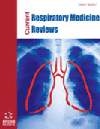
Full text loading...
We use cookies to track usage and preferences.I Understand

There is no consensus regarding the comparison between nasal continuous positive airway pressure (NCPAP) and high-flow nasal cannula (HFNC) in the treatment of respiratory distress syndrome (RDS) among premature infants.
This randomized controlled trial (RCT) assessed the efficacy of NCPAP compared to HFNC for the treatment of preterm neonates with RDS.
The study was conducted at Imam Hospital (Ahvaz, Iran) among preterm neonates with RDS and gestational ages ranging from 28 to 34 weeks. One hundred twenty preterm neonates were randomly allocated to the HFNC or NCPAP groups (n = 60). Demographic and clinical characteristics were collected.
This trial was carried out with 51 male and 69 female preterm neonates. There were no substantial differences between the HFNC and NCPAP groups in gender distribution, occurrence rates of premature rupture of membranes (PROM), necrotizing enterocolitis (NEC), cardiopulmonary resuscitation (CPR), Cesarean delivery, patent ductus arteriosus (PDA), intraventricular hemorrhage (IVH), pneumothorax, chronic lung disease (CLD), treatment failure, and mortality (P > 0.05). The mean body weight, gestational age, Apgar and RDS scores, duration of invasive mechanical ventilation (IMV), length of oxygen therapy, hospitalization period, duration to reach full feeding, arterial blood pH, or gas levels were not significantly different between the two groups. However, the HFNC group exhibited a lower incidence of nasal trauma, required more surfactant therapy, and had a longer duration of intervention compared to the NCPAP group.
There were no significant differences between NCPAP and HFNC for the treatment of RDS in preterm infants.

Article metrics loading...

Full text loading...
References


Data & Media loading...